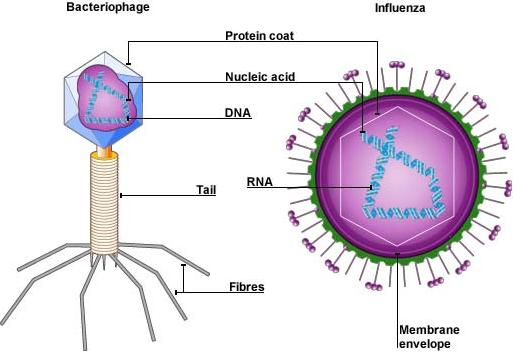 The core of a virus consists of a single kind of nucleic acids (genetic material, DNA or RNA) surrounded by a protein coat (capsid). It does not have an own cellular structure.
The core of a virus consists of a single kind of nucleic acids (genetic material, DNA or RNA) surrounded by a protein coat (capsid). It does not have an own cellular structure.
They multiply in a living cell of a host by stealing the synthesis structures of that cell. Or viruses life depends on the definition of "life”. They are situated on the edge.
Outside of a living host cell, a virus cannot be active. In that sense, you could say that it is not a living organisms.
However, in a host cell, the nucleic acid is active and is increased. In this sense, viruses can be (without own metabolism) considered as living organisms.
They are studied because they can raise as infections and diseases such as micro -organism
Ebola, herpes, chickenpox, shingles, cold sores and AIDS.
Paramyxoviruses can occur including measles, mumps, influenza (flu), avian flu...
Preventing infection is difficult, but measures are useful to prevent rapid expansion of a virus epidemic (Think of swine flu, avian flu, flu epidemics.)
Vaccination (with a slight variation) is training our immune system to quickly make the right antibodies at infection to directly fight the virus.
Because viruses are propagated through the cell that they entered it is hard to fight the virus itself. Antibiotics do not work against viruses.
One liter of seawater contains one hundred billion viruses. An average person houses 174 species.
"The last century medicine continuous strides, she has discovered thousands of new diseases.”(Louis Scuteaire)
"Nobody stays long incurable healthy. “(Gaby Vanden Berghe)
